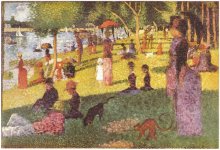Charlaquin
Goblin Queen (She/Her/Hers)
Oh! Sorry, I missed your earlier post.@Charlaquin, I hope you don't mind me circling back to my earlier question:
Because I think that this would also help getting a better sense of what you want out of a game.
I mean, it’s hard to say as I don’t have much experience with either. I can tell you what I’m envisioning is a system using Dungeon World’s core mechanic of rolling 2d6 + a modifier of up to +3 (which conveniently coincides with B/X’s relationship between ability scores and modifiers), with mixed success on a 6-9 and total success on a 10+, but tweaked to be used for “task resolution” rather than “consequence resolution.” I look at Dungeon World’s Act Under Pressure move and I see something very close to how I approach calling for checks in 5e. I can easily see massaging it into something like…Does your preference lean towards PbtA with OSE trappings or OSE with PbtA trappings?
Ability Check
When you want to accomplish a goal, describe what you want to do and how you try to do it. The GM might describe a potential consequence for failure and ask you to roll…
• +Str if you use direct physical force
• +Dex if you use agility or fine manipulation
• +Con if you use resilience and fortitude
• +Int if you use memory or deductive reasoning
• +Wis if you use your senses of perception or intuition
• +Cha if you use charm and social grace
On a 7 or higher you accomplish what you were trying to do. If you get under a 10 you suffer the consequence the GM described.
That could then be the basic format other Moves follow. Attack someone in melee? Roll + Str, deal damage on a 7+ but <10 they take +1 Forward to attack you back. Shoot an arrow at someone? Roll +Dex, deal damage on a 7+ but <10 the arrow is lost or damaged beyond repair, mark off 1 ammo. Try to recall lore? Roll +Int, on a 7+ you remember something interesting but <10 it might not be directly relevant. Etc.
From B/X I’d want the dungeon exploration procedures, basically as-is. The tracking of time and resources, rolling for random encounters, just generally all that “Gamist” scorekeeping stuff.
For characters, I’d want something like the Dungeon World playbooks, picking a new Class Move from among a couple options when you level up. But I might use the level 10 capstone to lead into that B/X style domain building endgame. You know, hit the level cap and start attracting followers, which then expand your stable of characters and gives you options to choose from to start taking into dungeons now that the previous character has moved on to running their stronghold or whatever.
I think that Forged in the Dark hack would also work. Steven Lumpkin (SilentOsiris) is working on Marches in the Dark (WiP), which tries to meld FitD with West Marches style campaigns.
West Marches style is definitely where I’m leaning, so that sounds promising.
Edit: I would also add another obvious candidate - Ironsworn - which you could definitely run solo at first if you are having an issue with finding players. @innerdude can speak much more about the system than I can regarding overall procedures.
Cool! I appreciate the recommendation!
Last edited:


